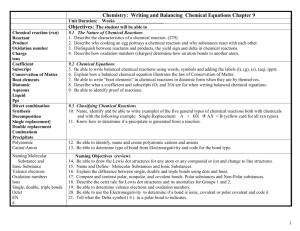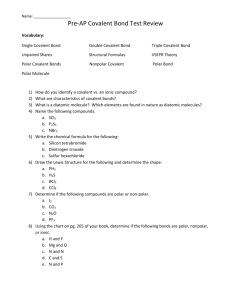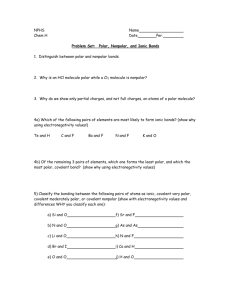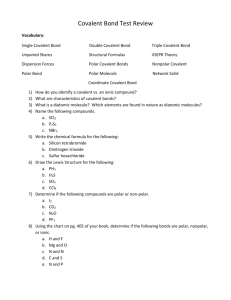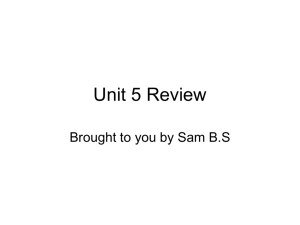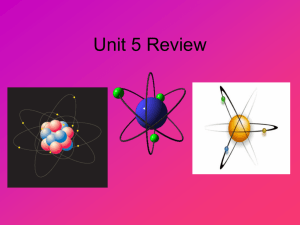Properties of Water
advertisement
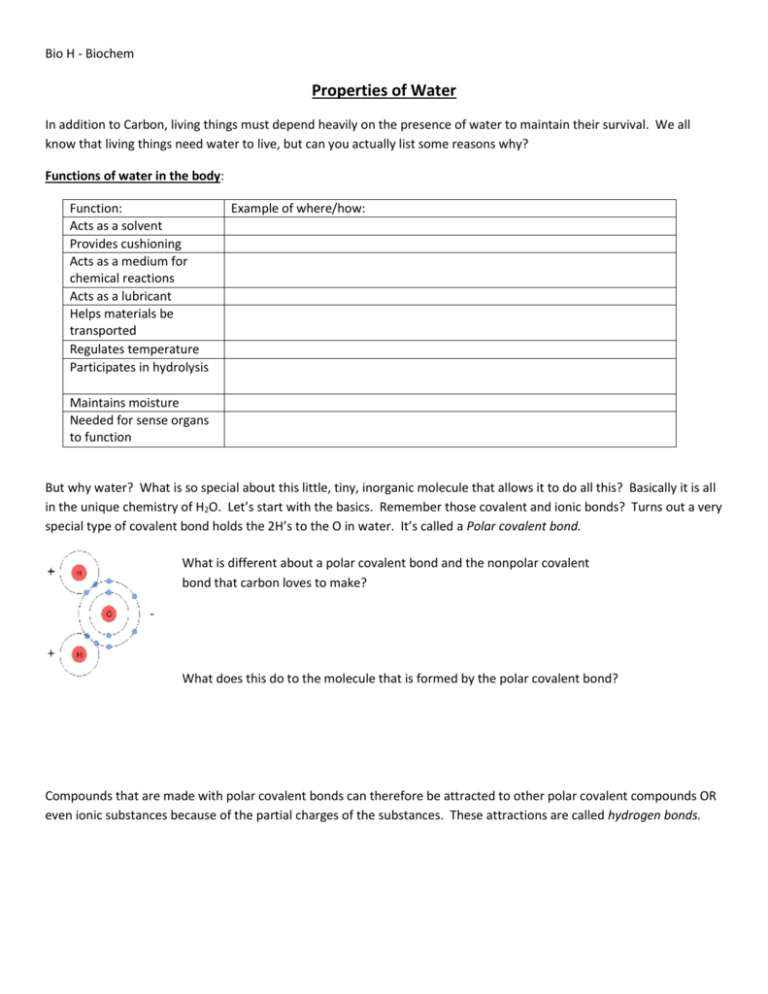
Bio H - Biochem Properties of Water In addition to Carbon, living things must depend heavily on the presence of water to maintain their survival. We all know that living things need water to live, but can you actually list some reasons why? Functions of water in the body: Function: Acts as a solvent Provides cushioning Acts as a medium for chemical reactions Acts as a lubricant Helps materials be transported Regulates temperature Participates in hydrolysis Example of where/how: Maintains moisture Needed for sense organs to function But why water? What is so special about this little, tiny, inorganic molecule that allows it to do all this? Basically it is all in the unique chemistry of H2O. Let’s start with the basics. Remember those covalent and ionic bonds? Turns out a very special type of covalent bond holds the 2H’s to the O in water. It’s called a Polar covalent bond. What is different about a polar covalent bond and the nonpolar covalent bond that carbon loves to make? What does this do to the molecule that is formed by the polar covalent bond? Compounds that are made with polar covalent bonds can therefore be attracted to other polar covalent compounds OR even ionic substances because of the partial charges of the substances. These attractions are called hydrogen bonds. Bio H - Biochem If the hydrogen bonds are forming between a water molecule and another water molecule it is called Cohesion. (water sticking to water) Where do we see cohesion? If the hydrogen bonds are forming between a water molecule and a different polar or ionic substance it is called adhesion. (water sticking to other stuff) Where does adhesion come up in biology? Both of the above make water an excellent solvent. This means it is GREAT at dissolving other things, solutes, making it very useful in the body. All the materials that need to travel about the body and into our cells need to be dissolved. Water is so good at dissolving that it is known as the universal solvent. BUT only other polar substances and ionic substances can dissolve in water. Nonpolar substance cannot. To make a nonpolar substance dissolve, you need a nonpolar solvent. - How does the chemical structure of water make it such a good solvent? (for a solvent to dissolve a solute, what has to happen to the molecules?) - Name a nonpolar substance that is important in the body. - When talking about solubility, there is a phrase “like dissolves like.” Considering what you read above, what does this mean? Water is often involved in mixtures of all types. A mixture is anything that combines two or more things in the same space WITHOUT chemically altering them. In other words, our substances are just occupying the same space, they haven’t formed bonds. Mixtures fall into one of three categories listed below. Describe each so you know the difference. (include some examples that you can identify with!) Homogeneous solutions: Heterogeneous suspensions: Colloids: Finally water requires a very large amount of energy to change its temperature. This is referred to as the specific heat of a substance. Why would this be beneficial to living things here on Earth?
